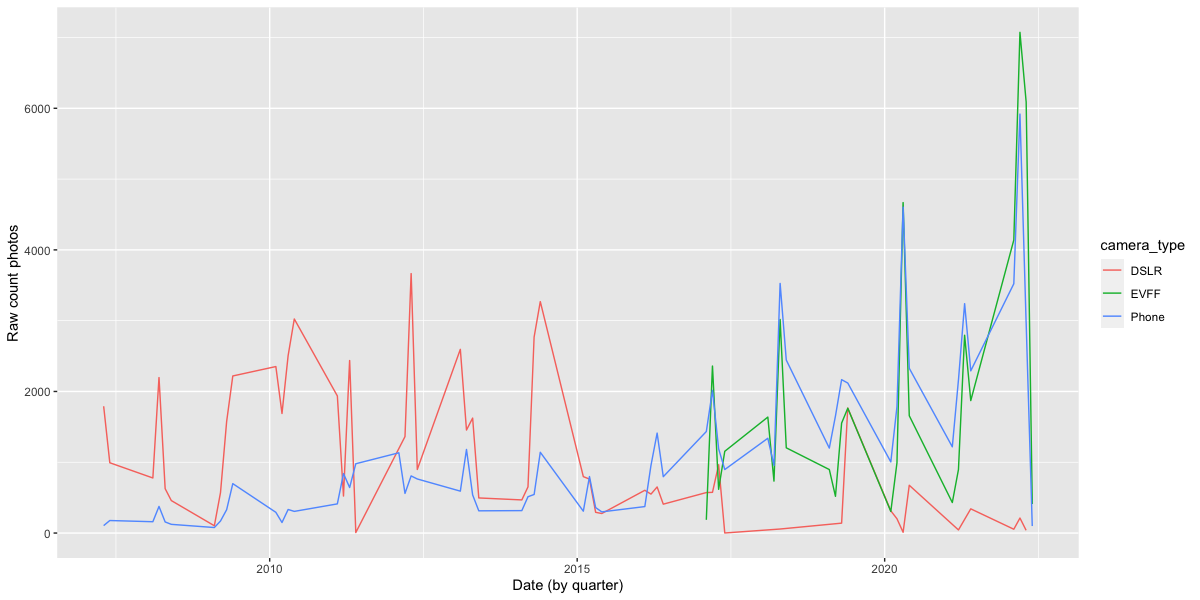Smartphones: Complement or Replacement?
While visiting Frankfurt, Mat stopped by the Leica store, but neglected to grab an M11 and a Noctilux-M. Over WhatsApp, we were discussing the long-term impact of computational photography on Leica’s business. We both agreed that the current iPhone cameras1 are astoundingly good, and although probably not yet on par with the best “large” digital cameras, that gap is getting much smaller. (Here, I use “large” digital camera to refer to anything with a sensor size of APS-C or larger.)
My guess is that in about 5 years, camera phones will be at least as good as my current “large” camera, a Leica Q2 (47MP full-frame with a 28mm f/1.7 lens), and within ten years, will have zoom capabilities that will be at least as good as the Canon 24-105 F4L, my standard zoom lens. In the 2030s, the “large” digital cameras will be almost as unusual as large format cameras were in the 1980s.
Mat asked if having the iPhone 13 acted as a replacement to the other cameras, or as a complement. I had recently been exploring how to use my Lightroom catalog as a source of analytics, and realized that this was a question that could be answered empirically, rather than just making some sort of random guess.2

The plot shows the number of pictures I’ve taken on a quarterly basis, split out by primary camera type: DSLR (here, primarily the EOS 5D Mk III); EVFF, “Electronic Viewfinder, Full Frame” (mostly the Leica Q and Q2), and Phone (a selection of Apple iPhones, and an occasional Samsung or Pixel). I started the plot with the first camera phone image (this omits a lovely Nokia 8801, but, to be honest, it had a horrible camera.), and continued to the present day.
Looking at the plot, I see no evidence of replacement. However, there is an important caveat: I am not a normal smart phone camera user. I am serious about photography, and use appropriate tools. I’m willing to carry around a fair amount of kit3 to get the right photo.
In other words, as I keep on reminding my co-workers, “we are not like the rest of the world.” My sense is that for the rest of the world, the phone is not only a replacement, it is a better replacement for whatever camera they were not carrying at the moment. (Or, even worse, the camera they were carrying; does anyone remember the Kodak Disc camera?)
Although I enjoy the process of futzing with images, I know I am unusual here. What people want are good pictures of the people, places, and events that matter to them. How we get there is the means, and no one cares if it’s a Kodak Brownie, a Polaroid Instamatic, or an iPhone 14.
You can find the R code for this plot here. (Eventually, I will turn this into a small R package.)
-
“Current” here being the iPhone 13 and iPhone 14. ↩
-
I did try to make an educated guess; I thought that the iPhone was a complement. ↩
-
The 645g Canon TS-E 45mm F2.8 is a prime example of heavy kit. Or the Mamiya C33 (1,810g). However, I can also use either of them to defend myself from charging animals on an safari. ↩